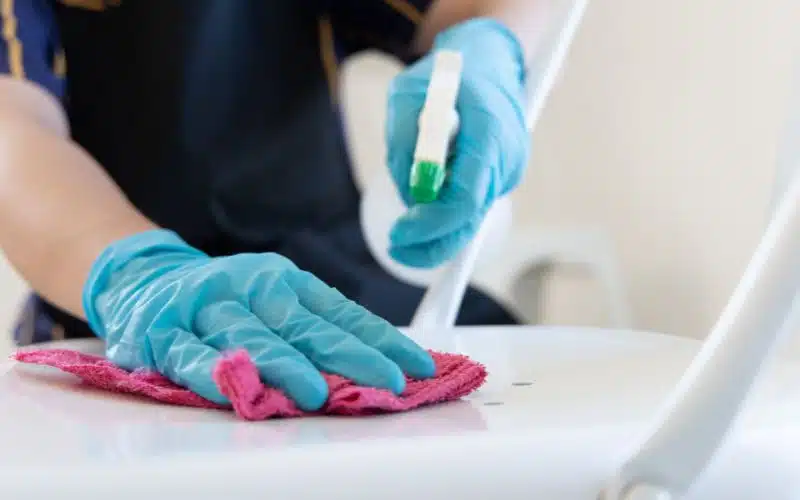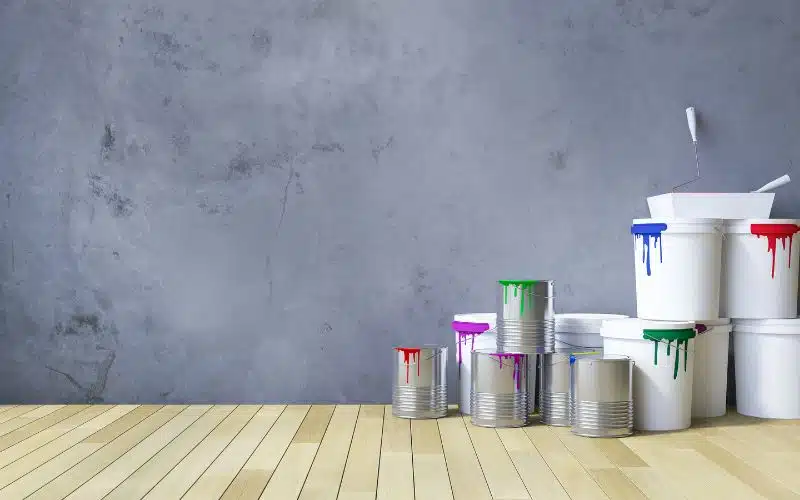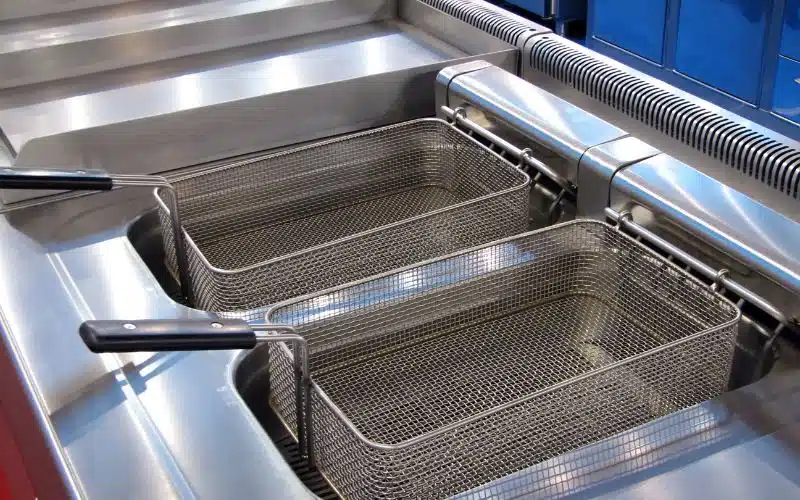There are gaps in gas pipe connections, and you need pipe sealants to block them.
You must wait for the sealant to dry when you use gas pipe sealants to block the leak path. But for how long?
Gas pipe sealant will dry completely or reach a complete cure in 24 hours if the room temperature is 72%F. If the temperature is over 200%F (93%C), the gas sealant will reach a complete cure in 24 hours.
How Long Should You Wait For Gas Pipe Sealant To Dry?

The cure period for gas pipe sealant, or how long you should wait for the material to dry, is about 24 hours.
At room temperature, the complete cure will take place within 24 hours. The materials used also determines the speed at which the pipe gas sealant cures.
Room temperature, in this case, is about 72°F or 32°C. However, at 200°F or 93°C, you only need to wait one hour for the pipe gas sealant to completely dry.
It dries faster when it contains certain materials. For instance, some thread sealants cure faster with active metals.
But, inactive metals can slow down the curing process, especially as they need an activator.
For brands requiring an activator, you can use an activator when the sealant takes too long to dry.
However, this is only true for some brands. That is why the sealant you use also affects the cure time.
Applying an activator to the surface will increase the drying speed, and the sealant will completely dry in 24 hours or less.
But, of course, this isn’t the case with every brand of sealant. The pressure in the pipelines is also responsible for the cure period.
Under normal pressures, the gas pipe sealant does not need a specified drying period.
But, when the pressure in the pipes is high, say 125psi, or when it’s higher, you need to wait about four hours for the pipe sealant to dry. Finally, applications and pipe diameter also affect the cure time.
Further, in colder temperatures, the cure time may be longer, and when the temperature is warm, the sealant will take less time to cure. Remember that the brand and sealant used also affect the cure time.
What Type Of Sealant Is Used On Gas Line Piping?
The sealant commonly used on gas line piping is Teflon tape. Generically, Teflon tape contains a material called polytetrafluoroethylene or PTFE.
Several tape sealants contain PTFE, but the most common tape sealant is called Teflon tape or plumbing tape. Teflon tape is the name of a particular brand, not the product’s name.
So, if you’re working on hooking up a stove or an appliance that requires a gas line, the sealant you should be looking for is Teflon tape.
That is because the threads on plumbing pipes or fittings aren’t solid, and when you screw two pipes together, you need a sealant to seal the deal.
Otherwise, any leak will go right through the threads. The threads are a little loose, making it possible to screw them together.
But unfortunately, it also makes it possible for water or gas to escape. So, you need to finish it off with tape before you screw the pipe in.
The tape is what will seal all the cracks and prevent any leakage. With gas line pipes, your best bet is Teflon tape.
The tape is usually color-coded based on what it’s meant for. So, in the case of a gas pipe, the color you need is yellow.
Teflon tape comes in other colors, but the yellow colored tape has a double density thickness and is specifically for gas and other fuel lines.
Apart from Teflon tape, another type of gas sealant is paste sealant. Paste sealants are more messy and much stronger sealants.
They are usually called pipe dope or pipe joint compounds. Pipe dope is also a very popular gas pipe sealant.
It is a chemical sealant that has the texture of the paste. It is thick and designed to be resistant to the materials it encounters.
Pipe dope is messier and more challenging to use. However, it seals very well, and in some states, it is a requirement for natural gas lines in the home.
The gas pipe sealant you choose to use depends on your choice, but comparing the two sealants will help you decide.
| Pipe Dope | Teflon Tape |
|---|---|
| Pipe dope produces a more robust seal than Teflon tape. | It is quick and easy to use |
| It is cheap though it can be messy. | Teflon tape provides a neat finish. |
| Most people find it more reliable because it’s been around longer. | It is easy to find, carry and store. |
Does Gas Pipe Sealant Need To Dry?
Pipe dope, also known as pipe glue or PVC glue, does not need to dry, especially under normal pressure.
Therefore, it does not need a set cure time or drying period. However, if the pressure in the gas lines is 125psi or higher, the recommended time for a cure is 4 hours.
You don’t have to wait for pipe sealant to dry up completely before you resume using the pipe. If you use Teflon tape, paste, or pipe dope, you need to know that these sealants don’t dry out.
The sealant isn’t supposed to dry up completely. It can be dry to the touch but not completely.
That is because it needs to maintain flexibility to accommodate the threaded joint’s pressure, heat, expansion, and contraction.
So, if you’ve just finished plumbing or fixing a pipe, you may be wondering how long before you start using the pipe, the answer is you can start soon afterward.
So, if you applied the pipe dope or Teflon tape and there is still a leak in the pipe, the issue is not that the pipe dope didn’t dry.
Instead, it is usually that the joint is not tight enough. So, you most likely need to tighten the joint again.
While some paste sealants only dry when there is no air and others when there is no metal, some pipe sealants aren’t meant to dry.
So, not every gas pipe sealant you purchase needs to dry. For a sealant like Teflon tape, there is no chance of drying.
Is Gas Pipe Sealant Permanent?
The manufacturers design most gas pipe sealants to be permanent. So, most gas pipe sealants used are permanent regardless of the type.
The only reason why you may have to remove the sealant is if you need to disassemble the pipe.
You can remove the sealant and replace it with another type of sealant in the case of a leak.
But, if the leak continues, you will have to replace the gas pipe or the fittings on the pipe. Again, the type of pipe sealant you use determines its longevity.
Case in point, if you use anaerobic thread pipe sealant, it will not relax or shrink as time goes on.
That is because the plastic seal that the sealant creates is permanent. So an anaerobic thread sealant is permanent.
How To Remove Dried Gas Pipe Sealant?
Pipe dope or pipe joint compounds are very common gas pipe sealants. Engineers and do-it-yourselfers usually apply the sealants to the threads of gas pipes before they join them together using couplings.
The goal is to make sure that gas does not leak out. If it does, you must disconnect the pipe from the coupling, and the engineer must remove all the dried gas pipe goo.
So, here’s how you go about that.
#1. Step 1
First, you have to find the source of the gas leak. Then, use a spray bottle to spray soapy water around each coupling on the gas pipe.
If any bubbles escape from seams, that is the source of the leak. Next, mark the areas with duct tape and turn off the gas supply.
#2. Step 2
Use a crescent wrench to remove the supply hose attached to the shut-off valve on one end of the line.
The other end of the hose always connects to an appliance that uses gas. Turn the wrench counterclockwise, and you’ll remove the valve.
#3. Step 3
Remove all the couplings marked with duct tape one after the other using the wrench. But, first, make sure you get the source of the leak.
#4. Step 4
Get a rag and place it around the threaded end of one section of the removed gas pipe.
Hold the rag firmly in place with one hand, and with the other hand, rotate the pipe counterclockwise. Do this until all or most of the pipe dope is gone.
#5. Step 5
Finally, use a steel brush to remove any remaining pipe dope from the thread. If any areas still have the compound, you can remove them using the same procedure.
Conclusion
The pipe sealants that need time to dry are anaerobic thread sealants and pipe dope. With both sealants, the cure time is 24 hours in some cases and an hour in others.





